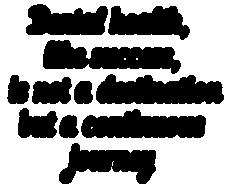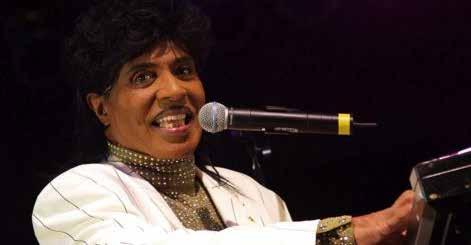
3 minute read
Urbanology
By: W.A.Rogers H istory clearly shows that the foundation of federal laws that prohibit the research and use of cannabis was greed and racism. The name marijuana that was leveled on the cannabis species that produced a psychoactive response (high) was introduced to the United States by Mexicans who crossed the border during the early 1900. Many were
Restorative Justice a Call to Action
Advertisement
freedom fighters who rode with Pancho Villa’ and were called his La Cucaraca’s (cockroaches).
The famous Mexican folk song “La Cucaraca’ was adapted and sung about his soldiers. The English version of the lyrics described a cockroach that could not walk because of the lack of Marijuana to smoke. Marijuana also became associated with Black music around the same time. White America was more familiar with Hemp another cannabis plant, The Declaration of Independence was made from hemp paper.
Both hemp and marijuana were used as medical remedies until the prohibition in the mid-1930’s motivated by wealthy industrialist to stop the industrial use of hemp. It was never about health or social concerns related to marijuana, yet the marijuana probation laws became weaponized and used unfairly against Black and Hispanic individuals and their communities which continues to this day.
A graph published in December 2018 by the Office of the New York City Comptroller, Scott M. Stringer of arrests by ethnicity between 2010 and 2017 showed that 86.5% of those arrested for marijuana in NYC were Black or Hispanic, 51.3% Blacks and 35.2% Hispanic. Now the world has rediscovered the health and economic benefits of both cannabis plants. Hemp was legalized in December 2018.
Eleven States have benefitted from the legalization
of marijuana New York State is currently drafting legislation to legalize marijuana which will open economic options into a multi-billion-dollar industry that many are calling the green rush. Now that marijuana is great again, what about the individuals and communities that have been harmed the most. How will they be able to take advantage of the NYS green rush.
The Restorative Justice movement is advocating that the language in the NYS Marijuana bill should provide economic and training opportunities for individuals who were most harmed over the years by the unjust marijuana laws. The term most harmed has been adopted to make sure the most harmed did not get lost in terms like minorities or MWBEs (Minority Women Business Enterprises) Blacks do not fare when those terms are used. According to another study published by Comptroller Stringer’s office for FY2017, NYC paid MWBE’s $1.68B dollars. Black companies received .1% of that just $16,000,000
The Restorative Justice movement’s position is that the NYS marijuana legislation must contain language focused on repairing the damage caused by marijuana prohibition laws and biased policing.
Business development, workforce development and community development geared towards wealth attainment and self-sustaining community economic growth to the most harmed, that is the major goal of Restorative Justice, assuring that those who were harmed the most will be in the front of the line to receive the economic benefits that the NYS Marijuana legalization legislation will bring.
If you would like to learn more about the Restorative Justice Movement and how you can make your voice heard in support of this very important initiative you can contact Regina Smith Executive Director of the Harlem Business Alliance (HBA) at info@hbany.org or visit their website at www.hbany.org.
Reginia has been in the forefront of the Restorative Justice movement in Harlem, I interviewed Regina and Maria Granville during a discussion on Restorative Justice during Harlem Holistic Wellness Week (H2W). You can watch that interview at www.h2w.nyc in the on demand section
Answers to Puzzle on page 16


Dr. George Williams











